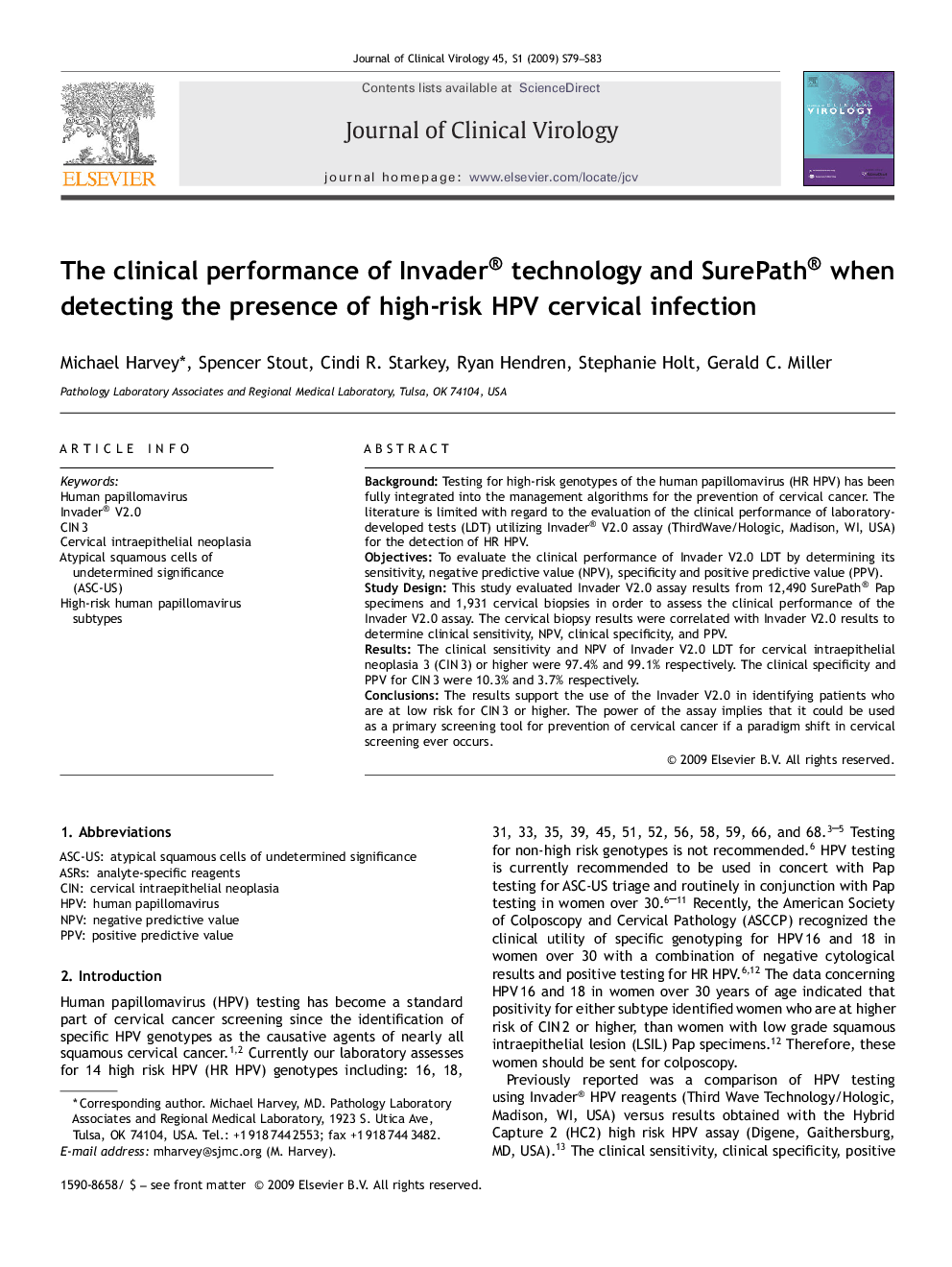| کد مقاله | کد نشریه | سال انتشار | مقاله انگلیسی | نسخه تمام متن |
|---|---|---|---|---|
| 3369840 | 1219055 | 2009 | 5 صفحه PDF | دانلود رایگان |

ABSTRACTBackgroundTesting for high-risk genotypes of the human papillomavirus (HR HPV) has been fully integrated into the management algorithms for the prevention of cervical cancer. The literature is limited with regard to the evaluation of the clinical performance of laboratory-developed tests (LDT) utilizing Invader® V2.0 assay (ThirdWave/Hologic, Madison, WI, USA) for the detection of HR HPV.ObjectivesTo evaluate the clinical performance of Invader V2.0 LDT by determining its sensitivity, negative predictive value (NPV), specificity and positive predictive value (PPV).Study DesignThis study evaluated Invader V2.0 assay results from 12,490 SurePath® Pap specimens and 1,931 cervical biopsies in order to assess the clinical performance of the Invader V2.0 assay. The cervical biopsy results were correlated with Invader V2.0 results to determine clinical sensitivity, NPV, clinical specificity, and PPV.ResultsThe clinical sensitivity and NPV of Invader V2.0 LDT for cervical intraepithelial neoplasia 3 (CIN 3) or higher were 97.4% and 99.1% respectively. The clinical specificity and PPV for CIN 3 were 10.3% and 3.7% respectively.ConclusionsThe results support the use of the Invader V2.0 in identifying patients who are at low risk for CIN 3 or higher. The power of the assay implies that it could be used as a primary screening tool for prevention of cervical cancer if a paradigm shift in cervical screening ever occurs.
Journal: Journal of Clinical Virology - Volume 45, Supplement 1, July 2009, Pages S79-S83